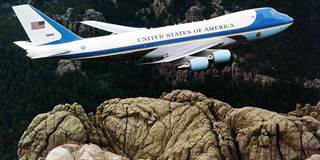When it comes to political entertainment, it doesn’t get much better than presidential election season in the US. Edward Bernays, the father of modern public relations, explained why almost a century ago.
NEW YORK – When it comes to political entertainment, it doesn’t get much better than presidential election season in the United States. Foreign observers follow the race to determine who is best equipped to lead the US – and, to some extent, the world – toward a more stable, secure, and prosperous future. But in America, entertainment is king, and Americans tend to focus on excitement above all – who looks better, has a catchier sound bite, seems most “authentic,” and so on, often to the point of absurdity.
This is not a new approach, of course. Edward Bernays, the father of modern public relations, examined it in 1928, in his book Propaganda. “Politics was the first big business in America,” he declared, and political campaigns are “all side shows, all honors, all bombast, glitter, and speeches.” The key to victory is the manipulation of public opinion, and that is achieved most effectively by appealing to the “mental clichés and emotional habits of the public.”
A president, in other words, is nothing more than a product to be marketed. And, as any marketer knows, the quality of the product is not necessarily what drives its success; if it were, Donald Trump would not be regarded as a serious candidate for the Republican Party nomination, much less a top contender. Instead, a president must serve as a kind of imaginary friend: a beer buddy for men, an earnest empathizer for women, or a charming Twitter user for the millennials.

NEW YORK – When it comes to political entertainment, it doesn’t get much better than presidential election season in the United States. Foreign observers follow the race to determine who is best equipped to lead the US – and, to some extent, the world – toward a more stable, secure, and prosperous future. But in America, entertainment is king, and Americans tend to focus on excitement above all – who looks better, has a catchier sound bite, seems most “authentic,” and so on, often to the point of absurdity.
This is not a new approach, of course. Edward Bernays, the father of modern public relations, examined it in 1928, in his book Propaganda. “Politics was the first big business in America,” he declared, and political campaigns are “all side shows, all honors, all bombast, glitter, and speeches.” The key to victory is the manipulation of public opinion, and that is achieved most effectively by appealing to the “mental clichés and emotional habits of the public.”
A president, in other words, is nothing more than a product to be marketed. And, as any marketer knows, the quality of the product is not necessarily what drives its success; if it were, Donald Trump would not be regarded as a serious candidate for the Republican Party nomination, much less a top contender. Instead, a president must serve as a kind of imaginary friend: a beer buddy for men, an earnest empathizer for women, or a charming Twitter user for the millennials.